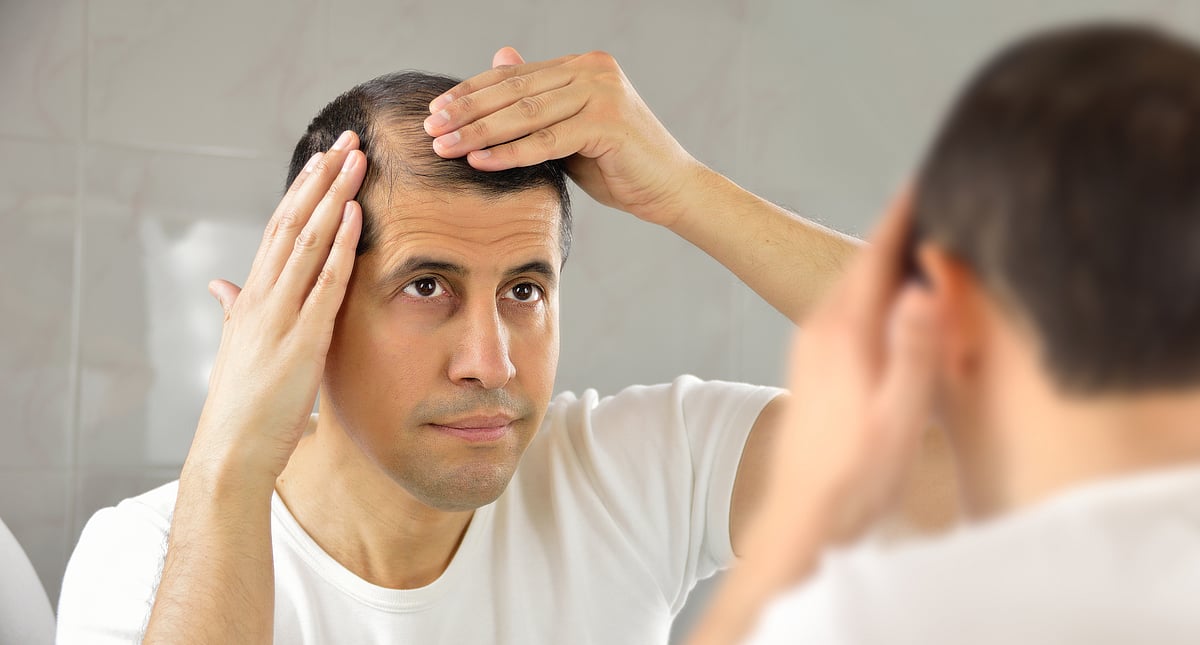I can well imagine that the medical term for this ailment must have been derived from the words “Hideous” and “Flow”, because that is what excessive dripping sweat can be for someone in presence of the sufferer, especially if accompanied with excessive body odour. It can be quite repulsive enough to create psychological ailments for the bearer based on body shaming and rejection.
Hyperhidrosis is a condition of excessive sweating. It may or may not have an underlying cause. People who have hyperhidros is sweat to the point that moisture may literally drip from their hands.
Normally, sweat glands produce perspiration that’s carried to the skin’s surface when the air temperature rises – when you develop a fever, or you’re exercising, or you’re feeling anxious, nervous, or under stress. When those factors are no longer an issue, the nerves that signal sweating are put on hold.
For the 1% to 2% of the population who have hyperhidrosis, the sweat glands don’t shut off. They sweat even when the circumstances don’t call for it – even when they’re in air conditioning, or while they’re sitting and watching television. Some people even tell their doctors that they sweat in a swimming pool.
The causes of hyperhidrosis depend on the type of sweating that happens. Most times, excessive sweating is harmless. In some cases, doctors don’t know why people sweat too much. In other cases, the causes of hyperhidrosis may be a medical condition that you need to be aware of.
Hyperhidrosis types
There are two types of hyperhidrosis. If your sweat glands had an “on” switch, the glands of someone with primary hyperhidrosis would always be flipped up. People with primary hyperhidrosis generally sweat from a certain type of sweat gland called eccrine sweat glands. These sweat glands make up the majority of the 2-4 million sweat glands in your body. Eccrine sweat glands are numerous on the feet, palms, face, and armpits.
When your body is overheated, when you’re moving around, when you’re feeling emotional, or as a result of hormones, nerves activate the sweat glands. When those nerves overreact, it causes hyperhidrosis. For instance, someone may only need to think of a situation that causes anxiety in order to break out in a sweat.
Doctors aren’t sure why people have primary hyperhidrosis, although it may be inherited. Many people tell their doctors they’ve had excessive sweating since they were a child.
People with primary hyperhidrosis may be able to cope with nonsurgical treatments, including:
Over-the-counter or prescription-strength antiperspirants that contain aluminum.
Medications called anticholinergics that affect the nerve signals to sweat glands. You may take them in pill form or apply them to your skin as a cream or with a medicated wipe.
A low-intensity electrical current treatment called iontophoresis.
Botox injections for underarm sweating.
Anti-anxiety medications to manage the stress than can cause you to sweat.
Surgery is usually only considered as a last resort for people with severe sweating in their hands and underarms. Surgery may involve removing sweat glands from the area. During another procedure, called thoracic sympathectomy, a surgeon cuts and destroys the nerves responsible for sweating.
One common side effect is excessive sweating in other parts of the body, such as the chest, back, or legs. Other possible risks include bleeding into the chest and nerve problems.
Secondary Hyperhidrosis causes
Sweating from secondary hyperhidrosis is different from primary hyperhidrosis in that it tends to happen all over or in one general area instead of just the hands, underarms, face, or feet. Unlike primary hyperhidrosis, this type is more likely to cause sweating during sleep.
And in this case, there is something that’s causing hyperhidrosis: a medical condition or a medication.
A number of medical conditions have the potential to cause hyperhidrosis. Some of them include:
Pregnancy, diabetes, hyperthyroidism, menopause, anxiety, obesity, Parkinson’s disease, rheumatoid arthritis, lymphoma, gout, infection, shingles, heart attack or heart failure, respiratory failure, alcohol or substance abuse etc.
Many medications can also cause excessive sweating including:
Antidepressants, Alzheimer’s drugs, diabetes drugs, including insulin and sulfonylureas, pilocarpine (for glaucoma) etc.
Uncovering the underlying condition and getting the proper treatment for it will help decrease the sweating of secondary hyperhidrosis. That’s why it’s best to tell your doctor when you’re having a problem with sweating, so that you can uncover the reasons behind it and get it treated.
Microwave therapy: With this therapy, a device that delivers microwave energy is used to destroy sweat glands. Treatments involve two 20 to 30 minute sessions, three months apart. Possible side effects are a change in skin sensation and some discomfort. This therapy may be expensive and not widely available.
Sweat gland removal: If excessive sweating occurs just in your armpits, removing the sweat glands there may help. A minimally invasive technique called suction curettage may be an option, too, if you aren’t responding to other treatments.
Nerve surgery (sympathectomy): During this procedure, the surgeon cuts, burns or clamps the spinal nerves that control sweating in your hands. In some cases, this procedure triggers excessive sweating in other areas of your body (compensatory sweating). Surgery is generally not an option for isolated head and neck sweating. A variation on this procedure interrupts the nerve signals without removing the sympathetic nerve (sympathotomy).
The following suggestions may help you cope with sweating and body odour:
Use antiperspirant: Nonprescription antiperspirants contain aluminum-based compounds that temporarily block the sweat pore. This reduces the amount of sweat that reaches your skin. This type of product may help with minor hyperhidrosis.
Apply astringents: Apply over-the-counter products containing tannic acid (Zilactin) to the affected area.
Bathe daily: Regular bathing helps keep the number of bacteria on your skin in check. Dry yourself thoroughly, especially between the toes and under the arms.
Choose shoes and socks made of natural materials: Shoes made of natural materials, such as leather, can help prevent sweaty feet by allowing your feet to breathe. When you’re active, moisture-wicking athletic socks are a good choice.
Change your socks often: Change socks or hose once or twice a day, drying your feet thoroughly each time. You may want to try pantyhose with cotton soles. Use over-the-counter foot powders to help absorb sweat.
Air your feet: Go barefoot when you can, or at least slip out of your shoes now and then.
Choose clothing to suit your activity: Generally, wear natural fabrics, such as cotton, wool and silk, which allow your skin to breathe. When you exercise, you might prefer fabrics designed to wick moisture away from your skin.
Try relaxation techniques: Consider relaxation techniques such as yoga, meditation and biofeedback. These can help you learn to control the stress that triggers sweating.
Here are some treatment recommendations:
Day time sweating with palpitation & knotted pulse: Treatment – P 6, H 5, CV 6, 17, UB 15, GV 14 Tone all points.
For Night Sweating: Treatment – Lu 7, 9, UB 13, CV 6, St 36, K 7 (L & R) ↑ all, Li 4 (L & R) ↓

Abnormal spontaneous sweating: Treatment – Lu 9, St 36, Lu 7, Si 3, K 7 (L & R) ↑ all Li 4 ↓
Profuse sweating on hands and feet: Treatment – Sp 3, 6, St 36, UB 20, 21, CV 12 (L & R) ↑ all

Spontaneous sweating: Treatment – (If stasis of blood is in chest) P 4, 6, H 7, CV 17, UB 14, 17, Sp 10, K 25 (L & R) ↓, all

(If stasis of blood is in liver or other parts of body) Liv 3, GB 34, CV 6, UB 17, 18, Sp 10 (L & R) ↓ all
(The Free Press Journal along with the Lions Club of Mumbai ACTION would like to guide people on how to treat self through non-invasive, therapies like Sujok, Ayurvedic Acupressure and Mudra Yoga. This is complementary and will not override the treatment given by doctor. Please share your problems by writing to us at features@fpj.co.in; lionsclubofaction@gmail.com. You can also share the problem on WhatsApp at 9323178565.)










